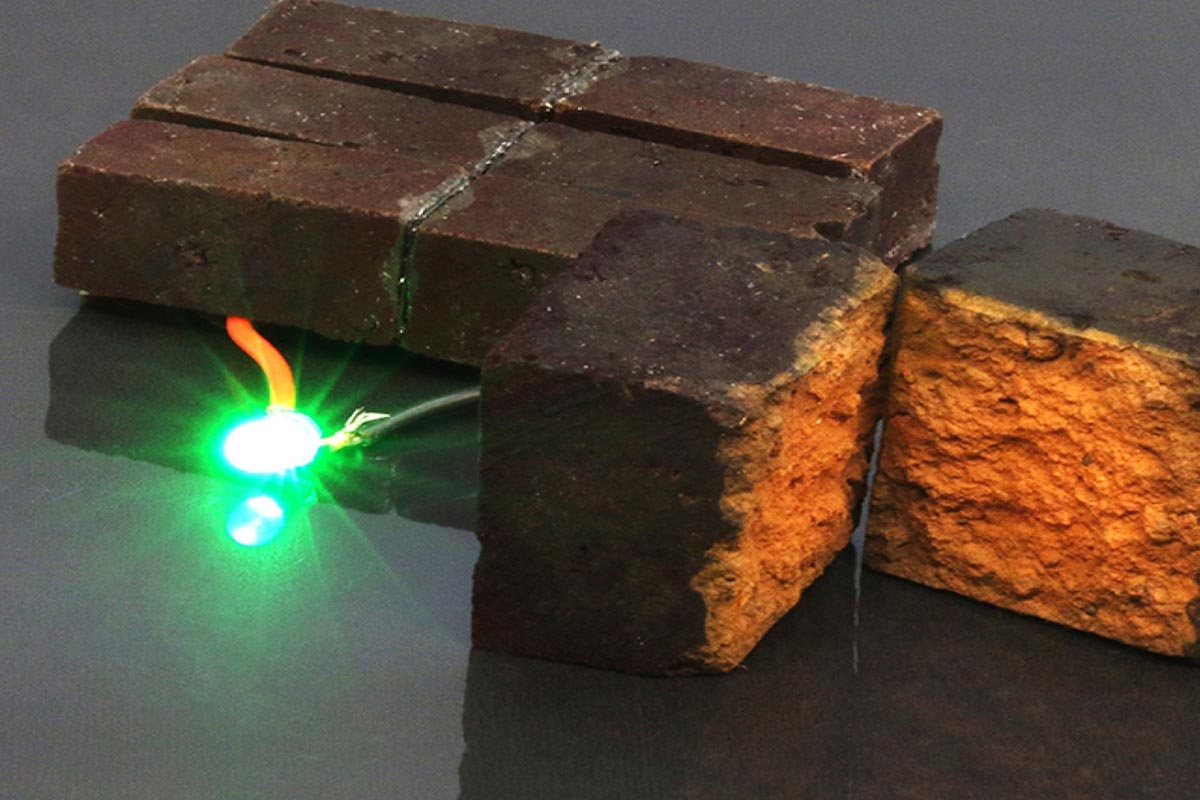The idea is not so bad if the walls of your house can store and provide energy. This concept is no longer in the realm of fiction thanks to scientific studies conducted by Washington University in St. Louis. Researchers have found a way to integrate energy storage into structural elements by turning red bricks into supercapacitors. This innovation could change our approach to storing and using energy in homes and buildings.
Storage Brick Science: Energy Storage Bricks Made from Simple Materials
The key to this remarkable transformation lies in the red pigment of the bricks; it is a flaky, red-brown substance called rust and composed primarily of iron oxide. The scientists proposed applying a thin layer of a polymer called PEDOT, which contains nanofibers that can penetrate the porous texture of a brick.
Conductive Polymer Coating: This polymer material also functions as an ion sink, capable of storing and transferring electricity. The iron oxide contained in the brick is essential to initiate the polymerization reaction so that the PEDOT coating can interact and function properly on the structure of the consumed bricks.
The applied process works with new and recycled bricksdry and, as such, is optimized for durability and potentially cheap manufacturing. Indeed, the Kleen constructs used to conduct the initial study came from a local Home Depot store and cost 65 cents each. These factors can make the technology relatively inexpensive compared to human labor and contribute to its adoption by more customers in the future.
https://srqbacklot.com/news/bei-hires-deutsche-bank-for-its-european-wind-energy-support-plan-of-5,000-kilos/594772/
Potential applications and benefits: Your home could be the next energy source
As you might expect, the energy storage of these “smart bricks” opens up a wide range of potential uses. Emergency lighting systems are undoubtedly one of the most promising applications for the imaginative thin films.
Some researchers estimate that it would take about 50 PEDOT-coated bricks to build a wall, and once connected to solar cells, they could power emergency lighting for three to five hours. This solution could prove invaluable in the event of a power outage or in places where the electricity supply is unpredictable, as is the case in many homes in developing countries.
In addition, these bricks can be charged at least hundreds of thousands of times in an hour and are ideal sustainable energy solutions. In addition to emergency lighting, this technology could also power microelectronics and other energy-efficient products, such as sensors.
Although the idea of smart homes and cities is still in its development phase, using building materials that also store energy can help solve some energy problems and increase the efficiency of energy use.
https://srqbacklot.com/news/rolls-royce-to-build-mini-nuclear-reactors-that-will-revolutionize-energy-in-the-uk/594779/
Future Perspectives in Sustainable Architectural Design: Revolutionary Building Blocks for Tomorrow’s Smart Cities
Overall, the duality design of energy-storing bricks will revolutionize modern architecture and city planning. The structures already occupy large areas of our cities and towns, and it would be foolish not to start taking the first concrete steps to consider covering them as an open possibility.
Turning these structures into energy storage units would be beneficial as they can already be incorporated solely for energy storage, meaning no additional construction or land acquisition would be required. This technology corresponds to a widespread practice of integrating renewable energy systems into the construction of buildings.
Although some architects have already understood that bricks allow thermal energy to be stored and released for heating and cooling purposes, this new invention goes further and also helps bricks store electrical energy. As part of our ongoing efforts to minimize the carbon footprint and strengthen the energy security of cities around the world, these innovations that include energy storage bricks can help build the resilient and sustainable cities of the future.
How red bricks are shaping our sustainable energy future
The transformation of standard red bricks into potential energy storage units therefore represents one of the most impressive advances in sustainable building materials. As these researchers show, bricks have specific intrinsic properties enhanced by polymer technology.
We can only expect this technology to adapt and expand, as we currently have homes and buildings that not only provide shelter, but can also produce energy. From the ancient structures of Mesopotamia and Egypt to the modern cities of the 21st century, simple brick has silently formed the framework for the civilizations that are now poised to define our energy future.


